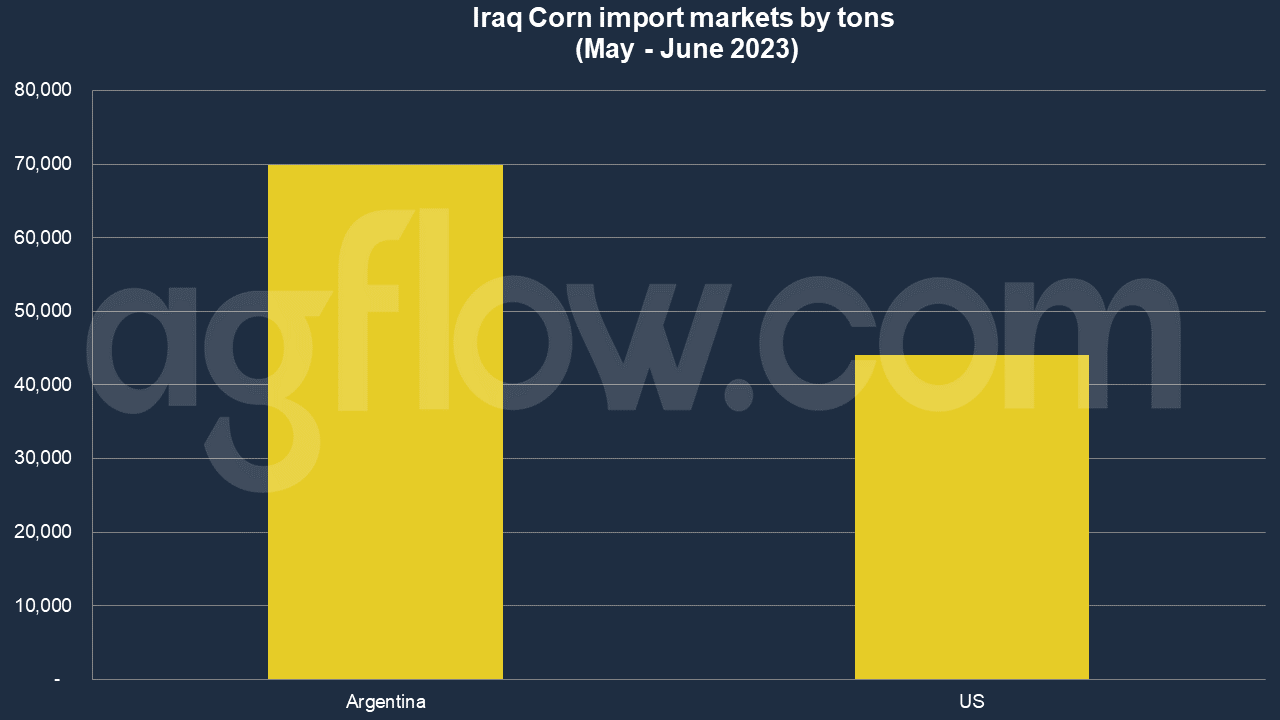Iraq’s Corn Imports: Argentina Heads
Talk to our team about AgFlow's offering →
Reading time: 2 minutes
Corn, a staple grain consumed worldwide, plays a pivotal role in the global agricultural market. As countries strive to meet the demands of their populations, the dynamics of corn imports and exports shift. Iraq, a nation with its unique set of challenges and opportunities, is no exception. This article delves deep into the key factors that have impacted Iraq’s corn imports from January to July 2023.
The Driving Forces Behind Iraq’s Corn Imports
1. Climatic Conditions and Agricultural Productivity: Has Iraq experienced any significant climatic changes in 2023? Unfavorable weather conditions often lead to reduced domestic production, necessitating increased imports. Analogous to a farmer watching the skies for rain, a nation’s agricultural output is at the mercy of Mother Nature.
2. Economic Factors: How has Iraq’s economy fared in 2023? Economic stability can influence the purchasing power of a country. If the nation is economically robust, it might afford to import more, even if domestic production is sufficient. Conversely, economic downturns might reduce imports, even if there’s a domestic shortfall.
3. Trade Relations and Policies: Who are Iraq’s primary trade partners when it comes to corn? Trade policies, tariffs, and international relations can significantly impact imports. For instance, favorable trade agreements can lead to a surge in imports, while disputes can hinder them.
According to AgFlow data, Iraq imported 69,900 tons of Soybean from Argentina in Apr – May 2023, followed by the United States (44,099 tons). In 2021, Iraq imported Corn worth $275 million, becoming the 36th largest importer of Corn in the world. At the same year, Corn was the 34th most imported product in Iraq. Iraq imports Corn primarily from: Ukraine ($118 million), Romania ($69.2 million), Turkey ($61.9 million), Brazil ($20.9 million), and the United Arab Emirates ($1.83 million).
In 2021, Corn imports for Iraq was 305,826 thousand US dollars, though Iraq corn imports fluctuated substantially in recent years.

The Tradeoffs and Challenges
Balancing Domestic Production with Imports: How does Iraq ensure that its local corn farmers are not adversely affected by imports? Striking a balance is crucial. Too much reliance on imports can stifle local production, while too little can lead to shortages.
Quality vs. Quantity: Is all corn created equal? Different sources might offer corn at varying quality levels and prices. How does Iraq ensure it’s getting the best bang for its buck?
Navigating Global Market Fluctuations: The global corn market is akin to a vast ocean, with waves of prices rising and falling. How does Iraq navigate these waters, ensuring it doesn’t overpay during peaks or miss out during troughs?
Conclusion
In conclusion, understanding Iraq’s corn imports is not merely about looking at numbers. It’s about understanding the intricate dance of nature, economics, politics, and strategy. As we’ve seen from January to July 2023, Iraq, like many nations, must juggle a myriad of factors to ensure its people have access to this vital grain. And as the global landscape continues to evolve, so too will the challenges and opportunities associated with corn imports into Iraq.
Try AgFlow Free
Access Free On Updates for Corn, Wheat, Soybean,
Barley, and Sunflower Oil.
No Credit Card Required & Unlimited Access In Time

